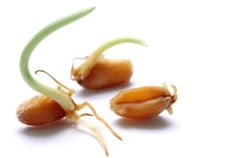Manure applied to grey soils can make dramatic crop yield increases without leaching problems if applied at the proper rate.
That is one finding from a three-year study called Demonstrating Opportunities for Hog Manure Fertilizer in the Grey Soil Zone by the Prairie Agricultural Machinery Institute in Humboldt and the Department of Soil Sciences at the University of Saskatchewan.
“Soils in the grey soil zone are very different from soils in the brown, dark brown and black zones, because they developed under forest conditions, not grassland,” said Gord Hultgreen, manager of PAMI’s soils and crops section.
Read Also

More factors affecting winter weather
When you combine a weak La Niña, early Siberian snow, and a warm northern Pacific, it’s easy to see why long-range winter forecasting is so complex.
“As a result, grey soils are highly leached and have low levels of organic matter. They may suffer from deficiencies of the macronutrients nitrogen, phosphorus, potassium and sulphur, as well as micronutrients,” Hultgreen said.
“It was therefore thought that manure applications may have particular benefit, as these soils often require multi-element fertilizer. Because swine manure contains a mixture of both macro and micronutrients, it is an excellent source of crop nutrients.”
In co-operation with Agriculture Canada, the project was carried out on grey wooded soils east of Melfort and at Loon Lake in northwestern Saskatchewan.
In the fall of 1999, 2000 and 2001, swine manure was injected at both sites with the PAMI low disturbance manure injection system at application rates of 3,000, 6,000 and 9,000 gallons per acre. These application rates represent the addition of available nitrogen at about 50, 100 and 150 pounds per acre respectively. Canola, pea, oat, barley and spring wheat were the trial crops.
“The results showed that annual applications of swine manure at rates of about 3,000 gallons per acre produced good yield responses from most crops on the grey soils, with no evidence of nutrient leaching below the root zone or deep migration by leaching.
“At Loon Lake, for example, the addition of swine manure more than doubled the canola yields and more than quadrupled the barley yields compared to the check,” Hultgreen said.
“On the other hand, the addition of swine manure did not significantly increase pea yield because of the pea’s ability to fix nitrogen.”
Bigger not always better
Larger single applications that were intended to provide nutrients for two or three years appear to be less effective on the crop response of grey soils. At the same time, there was no evidence of nutrient leaching, even at high-manure application rates.
Hultgreen also said that when growing “sulfur-loving” crops such as canola, it is important to ensure sulfur fertilizer is applied along with the swine manure in grey soil.
This accounts for the relatively low amount of sulfur in swine manure, the nature of the grey soils, and crop requirements.














